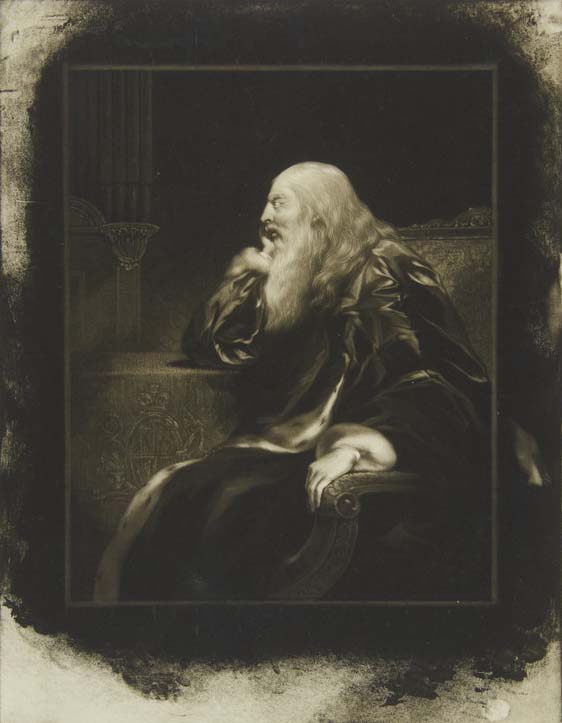Successive Princes of Wales have taken the transition of Prince Hal to the national icon King Henry V, dramatised in the Henry IV plays, as a way to excuse youthful excess and project future strong, sometimes military, leadership. In the process, they have attracted both Falstaffian acquaintances (politicians, showmen, social climbers) and a good deal of satire.
In the 1780s, George, Prince of Wales, dressed as The Winter’s Tale’s Florizel to mark his (brief) relationship with Mary Robinson, an actress whom he first encountered playing Florizel’s beloved Perdita. More ambiguously, the 'madness' of George III, since immortalised in Alan Bennett's play, drew inevitable comparisons with Shakespeare's King Lear.

Section Two: Acting royal
Members of the royal family have time and again modelled themselves on Shakespearean characters.
![A print of two men shaking hands. On the left is the Prince of Wales; he wears fashionable 1780s costume, including a tailcoat, tight breeches, knee-high boots, a prominent cravat and a bicorn hat. He holds a riding crop in one hand, tucked behind his back. On the right is Charles James Fox, dressed as Falstaff. He is bearded and very fat, and wears a slashed doublet, hose, wide boots, a cloak, a ruff, and a high-crowned hat adorned with two feathers. Below, the title ‘Falstaff & His Prince’ is printed in capitals, and dialogue is printed in small italic letters to either side. The Prince says 'There is a Gentlewoman in this Town, her name is [blank],’ (the name is censored). Falstaff replies (quoting from The Merry Wives of Windsor): ‘Master George I will first make bold with your Money next give me your hand & last as I am a Gent[leman], you shall if you will Enjoy [blank’s] Wife.’](https://images.cogapp.com/iiif/sharc/Falstaff-Prince.tiff/full/622,/0/default.jpg)


